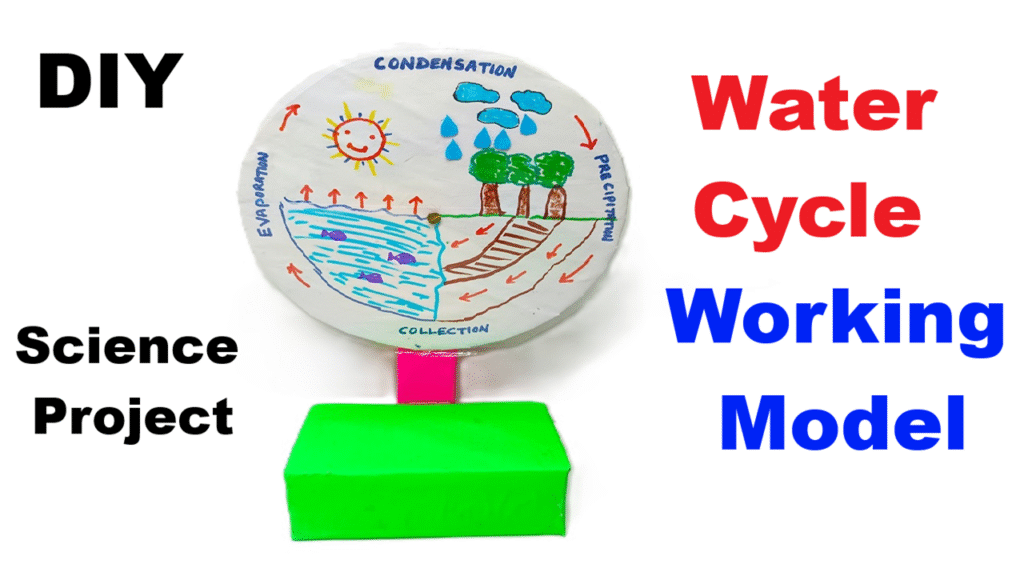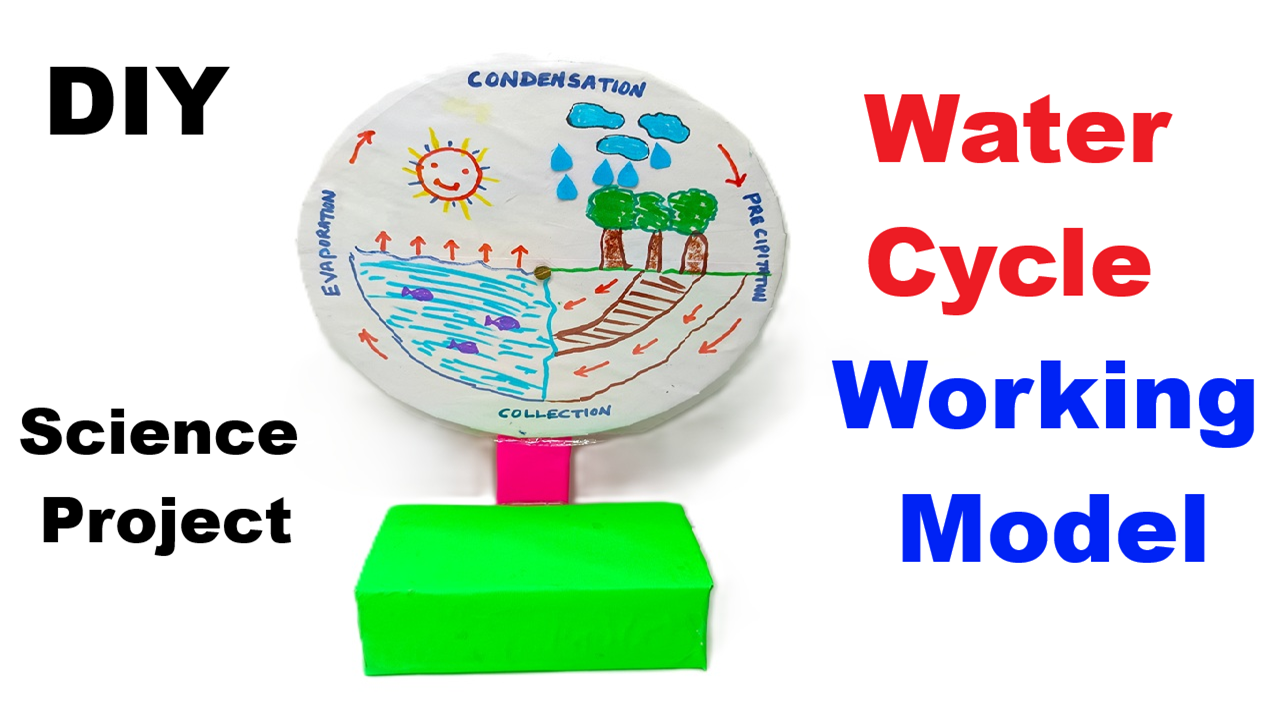Introduction
The Water Cycle (also called the Hydrological Cycle) is the continuous process by which water moves through the Earth’s surface, atmosphere, and underground layers. It involves four main stages: Evaporation, Condensation, Precipitation, and Collection. To make this concept visually engaging, we can create a circular-shaped working model that uses a transparent sheet for rotation to demonstrate rainfall and the continuous cycle of water.

Materials Required
- Cardboard base (circular shape)
- Transparent sheet (plastic or acrylic, circular cut)
- Small motor with 9V battery & switch (to rotate sheet)
- Blue chart paper or paint (to show water bodies)
- Cotton (for clouds)
- Plastic tube/pipe (for water flow)
- Small container with water (for collection)
- Glue, scissors, markers
Video Construction Steps
- Circular Base Setup
- Cut a large circle from cardboard to represent the cycle.
- Paint the lower part blue for oceans/rivers and the upper part sky blue for the atmosphere.
- Clouds & Sun
- Place a yellow sun (made from chart paper) at the top corner.
- Stick cotton clouds in the sky area.
- Transparent Rotating Sheet
- Fix a transparent circular sheet on top of the cardboard.
- Attach it to a slow-speed motor so it rotates when powered.
- Draw droplet patterns (raindrops) on the transparent sheet. When rotated, these raindrops simulate rainfall.
- Water Cycle Stages
- Evaporation: Show arrows rising from the water body toward the clouds.
- Condensation: Clouds store water vapor, depicted with cotton.
- Precipitation: As the transparent sheet rotates, raindrops “fall” from clouds to the land and sea.
- Collection: A small container at the bottom collects water, completing the cycle.
Working Principle
- The sun heats the water in oceans and rivers, causing evaporation.
- Water vapor rises and forms clouds (condensation).
- When clouds become heavy, rain (precipitation) falls back to the earth.
- Water is collected again in rivers, lakes, and oceans, completing the cycle.
- The rotating transparent sheet demonstrates continuous rainfall, making the cycle easy to understand.
Conclusion
This circular water cycle model with a rotating transparent sheet helps students visualize the continuous recycling of water in nature. It is interactive, low-cost, and exhibition-friendly, making it an excellent choice for a science project.

